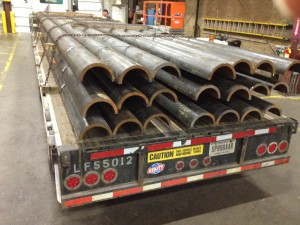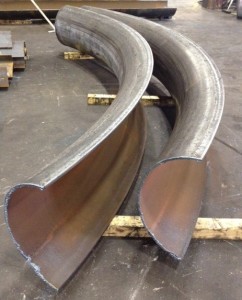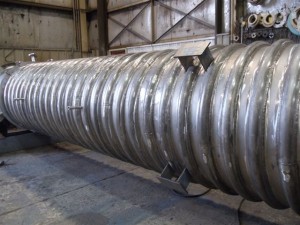A supervisor at ArcelorMittal wanted to keep its 40,000lb coils of steel from rolling when set on the ground. He welded lengths of pipe to a steel plate but found that approach to be unsatisfactory. After talking to us, one of our estimators suggested that perhaps half pipe would do the job. The supervisor agreed. Consequently, we cut 10in schedule 140 pipe in half longitudinally. The resultant sections came out curved longitudinally after torch cutting–sometimes curved in two planes. With the use of a section roller, however, the steel sections were straightened again. The customer now has a superior product while enjoying significant cost savings.

Another customer wanted to have 24in OD extra-heavy steel pipe curved to a 24ft outside diameter and then cut in half along the center-line diameter. For his application, he wanted only the sections where the ends of the curved pipe were on the outside radius. When he was curving pipe first and then cutting it in half, he was throwing out the sections where the curved ends formed the inside radius. Another of our estimators suggested that we cut the straight pipe first, and then we could use both halves which were rolled with the cut ends as the outside radius. Twice the production while using only half of the material. This customer, of course, asked us to split the pipe first and then curve both sections of half pipe.

A common application of pipe split and curved with the ends forming the inside radius is for it to “jacket” a cylinder allowing for fluids to heat or cool the contents of the cylinder.

An application where the pipe is curved with the needs out occurred when a customer wanted to reinforce a cylinder by welding a half-pipe ring inside the cylinder.
Splitting pipe has to be done with very careful measuring, marking and cutting to ensure that the end result is two 180-degree segments. Done right, the process of splitting pipe and curving or straightening the half pipe can save time and money in many applications.







